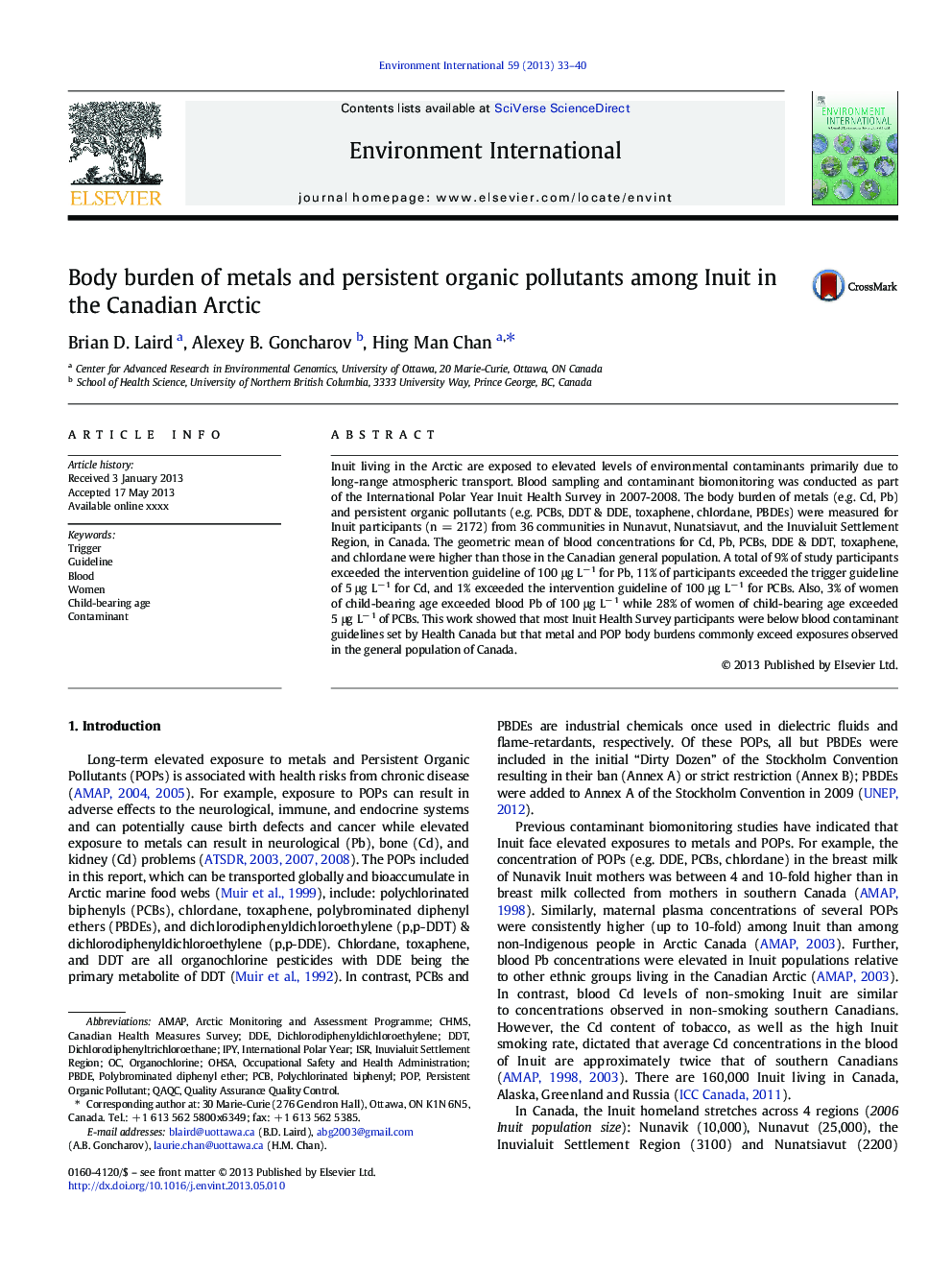| Article ID | Journal | Published Year | Pages | File Type |
|---|---|---|---|---|
| 6314232 | Environment International | 2013 | 8 Pages |
Abstract
Inuit living in the Arctic are exposed to elevated levels of environmental contaminants primarily due to long-range atmospheric transport. Blood sampling and contaminant biomonitoring was conducted as part of the International Polar Year Inuit Health Survey in 2007-2008. The body burden of metals (e.g. Cd, Pb) and persistent organic pollutants (e.g. PCBs, DDT & DDE, toxaphene, chlordane, PBDEs) were measured for Inuit participants (n = 2172) from 36 communities in Nunavut, Nunatsiavut, and the Inuvialuit Settlement Region, in Canada. The geometric mean of blood concentrations for Cd, Pb, PCBs, DDE & DDT, toxaphene, and chlordane were higher than those in the Canadian general population. A total of 9% of study participants exceeded the intervention guideline of 100 μg Lâ 1 for Pb, 11% of participants exceeded the trigger guideline of 5 μg Lâ 1 for Cd, and 1% exceeded the intervention guideline of 100 μg Lâ 1 for PCBs. Also, 3% of women of child-bearing age exceeded blood Pb of 100 μg Lâ 1 while 28% of women of child-bearing age exceeded 5 μg Lâ 1 of PCBs. This work showed that most Inuit Health Survey participants were below blood contaminant guidelines set by Health Canada but that metal and POP body burdens commonly exceed exposures observed in the general population of Canada.
Keywords
PCBIPYAMAPCHMSdichlorodiphenyldichloroethyleneDDEISRdichlorodiphenyltrichloroethanePBDEPersistent organic pollutantContaminantOccupational Safety and Health AdministrationOrganochlorineCanadian Health Measures SurveyPolychlorinated biphenylBloodGuidelinePolybrominated diphenyl etherDDTWomenInternational Polar Yeartriggerpop
Related Topics
Life Sciences
Environmental Science
Environmental Chemistry
Authors
Brian D. Laird, Alexey B. Goncharov, Hing Man Chan,
